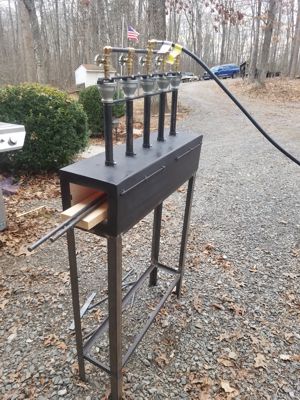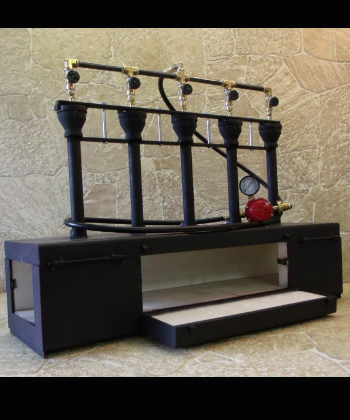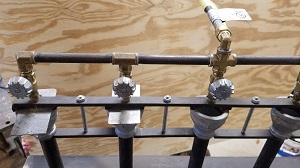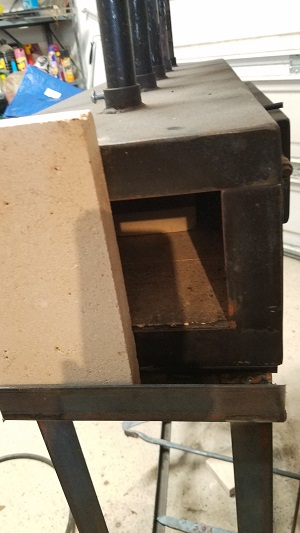After using the charcoal forge I built for a few years I decided it was time to upgrade. I was spending a lot of time heating metal up to temperature and I would end the the session with soot in my hair and pretty much everywhere. One downside of the charcoal forge I built (you can read about it here) is that during the forging session ashes and clinkers would collect and the efficiency of the forge would be reduced.
I spent a fair amount of time researching forges and it turns out that if your are in for a dime you might as well go in for a dollar. meaning that going to more burners than two or three didn’t really affect the cost much more.
In the end I decided to go with Majestic Forge, the prices seemed pretty reasonable and they had setups with more burners. If you watch “Forged in Fire” you have seen the Majestic 3 burner KnifeMaker setup. I decided to go with the artist deluxe 5 burner that allows you to heat odd shaped items. The reason I went for more burners was to allow the option to do longer pieces of work such as swords in the future.



I made a stand out of 1 1/2″ angle iron to hold the forge. It seems plenty sturdy and although in the pictures it looks top heavy it isn’t. In the future I intend to add some additional angle iron on the side to hold tongs and hammers. I haven’t exactly figured out how far away I will need to place the handles so they don’t get hot from the forge.
The manufacturer suggested adding covers for burners that are not being currently used, so I made some rectangular pieces out of steel flashing that slide in and out as needed. The manufacturer explicitly said do not block the entrances to the forge. I am guessing that is due to liability issues and the potential for turning the forge into a bomb if propane builds up inside with out a fire. I ran it without blocking the backside for a good while but I eventually fabricated a small ledge to put firebricks on. The main reason I did this was not to make the forge heat up faster but to prevent excess heat coming out of the rear of the forge due to the limited amount of space available in my shop.

I am using 100 lb propane tank along with a propane extension hose so I could put the bottle 25′ away from the forge. To operate the forge, you light it and set it to low and let it run for 5-10 minutes to preheat the forge and allow any moisture to evaporate. The forge is then turned off for 5 minutes and relight. It costs about $75 to refill the 100lb propane tank which lasts me several months as I use the forge fairly often but not daily for long periods of time.
Overall I have been very happy with the forge and it is definitely a nice convenience to light it up and not have to worry about bringing charcoal up to heat and having soot everywhere. In addition it can be run indoors which obviously cannot be done with coal or charcoal without a flume. While less traditional the propane forge is more well suited to hobbyists where time is a premium.